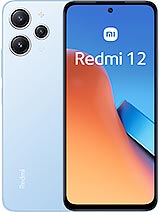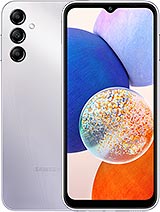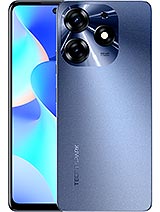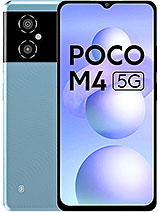Poco C65/Redmi 13C 4G review

Large 6.74-inch LCD, now with 90Hz
The Poco C65 is equipped with a pretty large LCD panel. It measures 6.74 inches in diagonal. As already mentioned, the C65 brings a high refresh rate to the Poco C family. It is just your "basic" 90Hz variety, but the difference between it and the standard 60Hz is still very noticeable, which makes it an appreciated addition.

Let's start with some performance numbers first. The LCD panel on the C65 is actually decently bright for an LCD. We measured around 480 nits of maximum brightness on the slider and 607 nits in max auto mode. Having that max auto overburn mode available is great for bright environments, though the C65 is still kind of difficult to use in direct sunlight.
It is also worth noting that the display on the C65 is only HD (720 x 1600 pixels) in resolution. That is spread a bit thin on the 6.74-inch, 20:9 panel, which results in slightly blurry visuals. It's nothing too drastic, but it's not perfectly sharp either.
On to colors. The Poco C65 has a total of three color modes available, plus a color temperature correction wheel. The modes include Vivid, which is the default, Saturated and Standard.
All three modes aim for the sRGB color space and cover it nicely. The vivid and saturated modes have slightly saturated blues, making the color palette cold. This is particularly true for the saturated mode. You can still get pretty accurate colors by using the standard mode. It gets deltaE 2000 values low enough to be considered color-accurate.
The C65 understandably has no hardware HDR capabilities. Still, it has decoder support for Dolby Vision. No HDR, HDR10+ or HLG, though.



HDR modes • DRM info • Netflix playback capabilities
On a more positive note, we are happy to report that the Poco C65 supports the highest possible Widevine L1 DRM certification, allowing services like Netflix to offer up FullHD streams. That is frankly odd since it is technically more than the on-screen resolution of the phone itself, but we'll take it anyway.
High refresh rate handling
90Hz refresh rate is an exciting new addition that is making its way onto the budget Poco C line with the C65. As we said, while 90Hz is more or less the most "basic" and "entry-level" high refresh rate you can get, it still makes a huge difference in the perceived smoothness of scrolling and animations.

To further sweeten the deal, the Poco C65 even has some adaptive refresh rate switching logic in place. The phone has a total of three refresh rate modes - default, which promises automatic switching between 90Hz and 60Hz, and then 90Hz and 60Hz modes. The 60Hz mode is the most straight-forward. It just offers a locked 60Hz experience. The 90Hz mode is not fixed at 90Hz, though. It is dynamic and has some logic to drop down to 60Hz.
From what we can tell, the phone favors 90Hz for most of the UI as long as you are interacting with the phone or there is some motion on the screen. Once neither is true, it drops down to 60Hz to save power. Some apps, like most Google apps and certain other third-party ones like Facebook, also work at a fixed 60Hz all of the time. The phone is a bit more clever when it comes to video playback. Most multimedia apps like the gallery operate at 90Hz within the UI, but once the video playback starts, the phone is smart enough to recognize the scenario and drop to 60Hz.
Overall, we observed pretty much the exact same behavior by using the Poco C65 in its Default refresh rate mode as well. So, effectively, the phone only has two refresh rate modes.
High refresh rate gaming seems to be a no-go on the Poco C65. We tried a few games that we know can push past 60fps, and none of them managed to trigger a 90Hz refresh rate, regardless of the display refresh mode settings. The included Game Center does not offer refresh rate settings either.




High refresh rate gaming is a no-go
All things considered, we like how the Poco C65 handles its automatic refresh rate switching. The behavior is smart and multi-faceted and caters well to saving battery power. High refresh rate gaming is a no-go on the phone. The chipset is a bit strapped for power anyway. We frankly couldn't ask for more, especially from such a budget device.
The switching rate on the actual pixels could have been a bit better. The C65 has plenty of ghosting and smearing while scrolling, especially on smaller text.
Battery life
The Poco C65 has a pretty large 5,000 mAh battery. That being said, the MediaTek Helio G85 chipset is not exactly known to be the most energy-efficient part out there. As you might know, we recently debuted our new GSMArena battery test 2.0 and the new Active Use Score metric. You can read all about it here.
The Poco C65 did pretty well in our battery testing. Nothing spectacular, but still a solid showing. It managed excellent call endurance numbers, and its video streaming and web endurance are not half bad either. The gaming component leaves a bit to be desired. That's pretty odd, considering that the phone can't consistently game at 90Hz, which would put extra strain on the GPU. Plus, it only has an HD+ resolution. Still, we tested and retested our numbers, and we have yet another reason why the Poco C65 is not a great gaming phone.
Charging speed
One of the upgrades in the Poco C65 coming from the C55 is the support for 18W PD charging (up from a simple 10W charging rate). Admittedly, that still doesn't make the C65 a particularly fast-charging device.

Fifteen minutes on a compatible PD charger with enough wattage got our review unit from dead to just 14% battery power. Thirty minutes of charging resulted in 28% battery, and a full charge took a whopping 2:09 hours. To be fair, we've seen slower-charging budget devices, but the C65 isn't fast by any stretch of the imagination.
Things look worse still if you stick to using the 10W (5V@2A) charger included in the phone’s retail box. With it, fifteen minutes get you 11% charge, 22% for thirty minutes, and a full top-off requires around 2:35 hours.
Speaker
The Poco C65 only has a single bottom-firing speaker. There is no stereo setup, not even a hybrid one. The single speaker is not particularly impressive either. It only managed a BELOW AVERAGE loudness score in our test. Its frequency response is decent, but there is nothing to phone home about. The mids and voices, in particular, come through enough, arguably the important bit. Plus, we need to remember how inexpensive this Poco C65 is and adjust our expectations accordingly.
In terms of additional audio features, the C65 has something called Sound assistant. Its noteworthy feature is adjusting volumes per app while multiple apps are playing audio.
The C65 also has a menu called Sound effects. There seems to be only a single automatic optimization option available, but on a more positive note, there is a full-featured equalizer.
Use the Playback controls to listen to the phone sample recordings (best use headphones). We measure the average loudness of the speakers in LUFS. A lower absolute value means a louder sound. A look at the frequency response chart will tell you how far off the ideal "0db" flat line is the reproduction of the bass, treble, and mid frequencies. You can add more phones to compare how they differ. The scores and ratings are not comparable with our older loudspeaker test. Learn more about how we test here.
Reader comments
- Joj
- 11 Apr 2025
- 0p}
GSMArena should give reviews of all the phones they post here Some opinions posted below the phones are very misleading!
- Curiosity kill dog
- 24 Mar 2025
- B1m
Redmi 13 C by Xiaomi ir os not bad smartphone. Mine its top off the lineup, with 8gb RAM Plus 8 I think on virtual mods, because phisically only has 8 GB RAM. 256 gb rom. A Nice screen althought not full hd resolution. Its pitty not have 4k video rec...
- Nn
- 20 Mar 2025
- Ld8
Go to settings then additional settings then memory extension then you increase the memory you wat












































